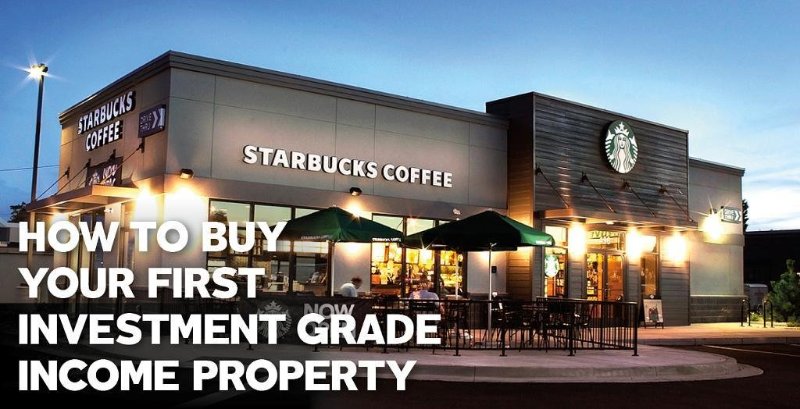In today’s volatile economic landscape, characterized by fluctuating interest rates and persistent market uncertainties, investment-grade net lease properties continue to stand out as compelling vehicles for investors seeking reliable income streams combined with relatively lower risk profiles. As we navigate through 2025, understanding the nuances of this investment class has become increasingly important for investors looking to diversify their portfolios and hedge against inflation while securing predictable returns.
Understanding Investment Grade Net Lease Properties
Investment grade net lease investments involve properties leased to tenants with strong credit ratings (typically BBB- or higher as determined by major rating agencies like Standard & Poor’s, Moody’s, and Fitch). These ratings indicate the tenant’s ability to meet financial obligations, with higher ratings correlating to lower default rates. Companies with an AAA rating, for instance, are considered low risk with an average default rate of just 0.52%.
The “net lease” component refers to lease structures where tenants are responsible for various property expenses beyond base rent. These structures come in several forms: single net lease (tenant pays property taxes), double net lease (tenant pays property taxes and insurance), and triple net lease (tenant pays property taxes, insurance, and maintenance costs). This arrangement significantly reduces management responsibilities and operational risks for property owners.
The “investment grade” designation provides an additional layer of security. As ExchangeRight notes, “Investment-grade, long-term net-leases can provide stability of income and value to investors despite difficult economic circumstances. The lease payments typically are backed by some of the country’s strongest corporations.”
Current Market Trends in 2025
The net lease investment landscape has evolved considerably over the past few years. In 2025, the market is characterized by “rising cap rates, evolving tenant demand, and macroeconomic conditions” that present both challenges and opportunities for investors, property owners, and brokers alike.
Cap Rate Movements
Cap rates, a key metric indicating an investment’s potential return, have shown significant movement. According to Northmarq’s research, “Cap rates have climbed steadily for nine consecutive quarters and now average 6.78%” as of early 2025, reflecting broader market shifts as investors adjust to higher borrowing costs.
This trend represents a notable shift from historical lows seen in previous years. Industry analysts had predicted this adjustment, with some forecasting that cap rates could climb “50 to 75 basis points from current levels through 2024 and well into 2025” due to changing market dynamics.
However, the story varies by property type and location. In the industrial sector, for instance, regional differences are evident with “a narrower spread than other net lease sectors of just 99 basis points between the Northeast’s low average of 5.84 percent and the Southwest region at 6.83 percent.”
Transaction Volume and Investor Sentiment
After a period of reduced activity, the market showed promising signs by the end of 2024. The fourth quarter of 2024 recorded $13.8 billion in investment sales—a 57.6 percent increase from the same period in 2023—signaling “not just an uptick in transactions but a resurgence of confidence in the market.”
This momentum is expected to continue into 2025, though with some caveats. According to CBRE’s Cap Rate Survey, “persistent inflation and high interest rates have delayed sales recovery,” with a significant rebound anticipated only in 2025.
Sector-Specific Performance
Retail, industrial, and office sectors each present unique dynamics within the net lease market:
Retail Sector: The retail net lease sector continues to experience significant shifts in 2025, with performance varying widely by tenant category. Discount retailers have emerged as one of the strongest-performing segments, with consumer foot traffic increasing in response to economic uncertainty and inflationary pressures.
Industrial Sector: The industrial market has shown remarkable resilience with strong fundamentals driving investor demand. New developments, including Amazon’s expansion of same-day delivery services and major manufacturing plants by companies like KYOCERA and Honda/LG, highlight the continued demand for industrial facilities.
Office Sector: Office properties face the most significant challenges, with ongoing market uncertainties leading to wider bid-ask spreads and continued yield expansion.
Benefits of Investment Grade Net Lease Investments
Income Stability and Predictability
One of the most compelling advantages of investment grade net lease properties is the stability they offer. By their very structure, “long-term net-leased properties allow investors to predict, far in advance, their future stream of lease payments throughout the lease term. All of the terms, payments, increases, etc. are defined ahead of time in the lease agreement.”
This predictability becomes particularly valuable during economic downturns. Investment grade tenants are “able to honor their obligations even in a difficult economy,” providing investors with a reliable income stream when other investment vehicles might falter.
Reduced Management Responsibilities
Long-term net leases are “SIMPLE to manage, since most maintenance, insurance, and operational expenses are paid by the tenant.” This passive investment approach allows investors to enjoy the benefits of real estate ownership without the typical day-to-day management burdens.
Inflation Hedge
In an inflationary environment, net lease investments offer potential protection. “The stability net lease offers in a time of high inflation is just one reason the strategy’s time has come,” according to industry experts. Many net lease agreements include rent escalation clauses that help investors maintain purchasing power over time.
Tax Advantages
Investment grade net lease properties offer significant tax benefits, particularly through 1031 exchanges. These exchanges “let investors defer capital gains taxes” when they sell one property and reinvest the proceeds in another similar property within specific timeframes.
Additionally, investors can benefit from various depreciation strategies that further enhance the after-tax returns on these investments.
Potential Drawbacks to Consider
While investment grade net lease properties offer numerous advantages, prudent investors should also consider the potential drawbacks:
Limited Upside Potential
“The same benefits that provide stability and downside protection also provide a limit to your upside potential. Unlike apartments or commercial property with shorter-term leases that can be increased consistently with an increasing market, long-term net-leases are fixed for extended periods of time that do not allow for reactions to short-term market fluctuations.”
Tenant Default Risk
The largest drawback to investment-grade, long-term net-leased real estate is that “if your primary tenant defaults, it can be very difficult to find another tenant to replace the original.” This risk is amplified when financing is involved, as investors must continue servicing debt while finding a replacement tenant.
Furthermore, replacement tenants typically require tenant improvements—funds used to prepare the space for their specific needs, adding to the investment cost.
Interest Rate Sensitivity
Net lease investments, particularly those with long-term fixed leases, can be sensitive to interest rate fluctuations. When rates rise, as they have in recent years, the present value of future lease payments declines, potentially impacting property valuations.
Strategic Approaches for Investors in 2025
Focus on Tenant Quality and Industry Segment
Not all investment grade tenants are created equal. Successful investors often “target those companies that provide necessity products and services such as food, groceries, gas, pharmaceuticals, healthcare and medical supplies, discount clothing, discount domestic and home improvement supplies, discount automobile supplies and repair, transportation and information carrier services, and infrastructure and utilities equipment and services.”
These necessity-focused businesses tend to remain resilient even during economic downturns, providing additional security for investors.
Geographic Diversification
According to industry experts, “The best places to look for triple net lease investment possibilities are in high-growth regions with a greater-than-normal population surge and economic expansion. These regions have net lease above-average cap rates.”
However, investors should not overlook opportunities in secondary markets. In 2025, “private investors and family offices are stepping in to acquire value-add opportunities and assets in secondary markets, where cap rates are often more favorable.”
Lease Term Evaluation
The length and structure of the lease agreement significantly impact an investment’s risk-return profile. Triple net lease investments typically involve “a portfolio of three or more high-grade commercial properties fully leased by a single tenant with existing in-place cash flow” with “typical lease terms lasting 10 to 15 years, with rent escalation.”
Longer lease terms with creditworthy tenants generally provide greater stability but may offer lower initial yields compared to shorter-term leases.
Portfolio Diversification
Regardless of your investment plans, “it’s always a good idea to DIVERSIFY your portfolio. One of the best ways to do that is to invest in investment grade net leases.”
Rather than concentrating capital in a single property or tenant type, prudent investors spread risk across multiple assets, geographical regions, and industry sectors.
Emerging Opportunities in the Net Lease Market
As the market evolves, new opportunities are emerging for savvy investors:
Non-Traditional Sectors
While traditional net lease investments in retail and office spaces remain popular, “there is an emerging trend towards non-traditional sectors. Net lease investments in data centers, self-storage facilities, and even cannabis-related properties are gaining attention.”
ESG-Focused Investments
Environmental, Social, and Governance (ESG) considerations are increasingly influencing investment decisions. Properties with green certifications, energy-efficient systems, and sustainable features are attracting premium valuations and often securing higher-quality tenants.
Sale-Leaseback Opportunities
In 2025, some investment firms are taking a different approach to net lease real estate, “focused on creditworthiness of the underlying tenant.” By executing sale-leasebacks “across all major property/industry verticals in primary, secondary, and tertiary markets,” these investors are finding unique opportunities in the current market environment.
Outlook for 2025 and Beyond
As we look ahead, the net lease market shows promising signs of stabilization after a volatile period. Despite various challenges, “the resilience of the net lease market is no accident. The sector’s stability—driven by long-term leases with creditworthy tenants and low tenant turnover—has kept investor interest strong.”
According to CBRE’s market analysis, cap rate expansion appears to have peaked, with “the majority of respondents thinking cap rates have peaked” due to “less hawkish signals from the Federal Reserve and falling bond yields.”
This sentiment shift, combined with increasing transaction volumes, suggests a potential return to more normalized market conditions as we progress through 2025.
Conclusion
Investment grade net lease properties continue to offer compelling benefits for investors seeking stable income, reduced management responsibilities, and potential inflation protection. While the market has faced challenges due to interest rate fluctuations and economic uncertainties, the fundamental advantages of this investment class remain intact.
As we navigate through 2025, the most successful investors will be those who carefully evaluate tenant quality, geographic location, lease structures, and sector-specific trends. By taking a strategic approach and maintaining a long-term perspective, investors can capitalize on the unique benefits of investment grade net lease properties while effectively managing the associated risks.
In an investment landscape characterized by volatility and uncertainty, the relative stability and predictability of investment grade net lease properties make them an attractive component of a well-diversified investment portfolio—a beacon of stability in uncertain times.



